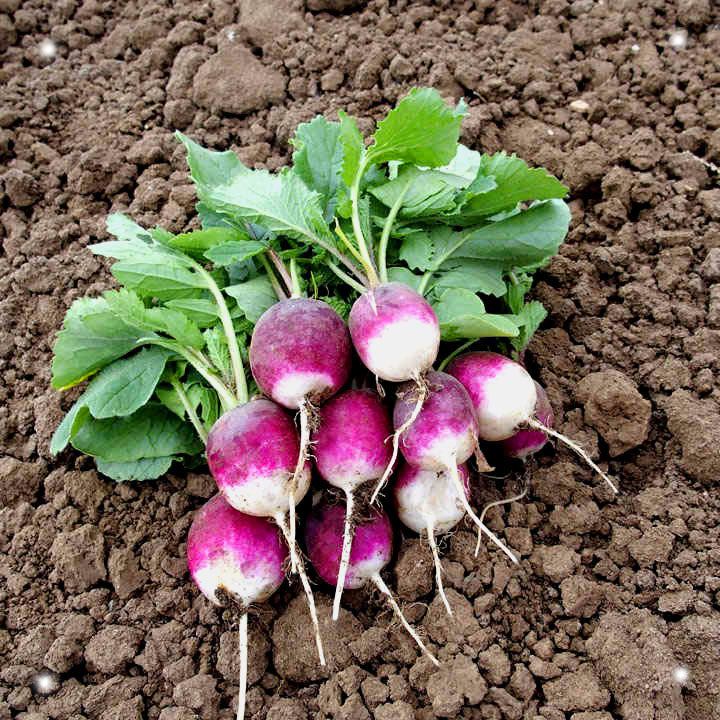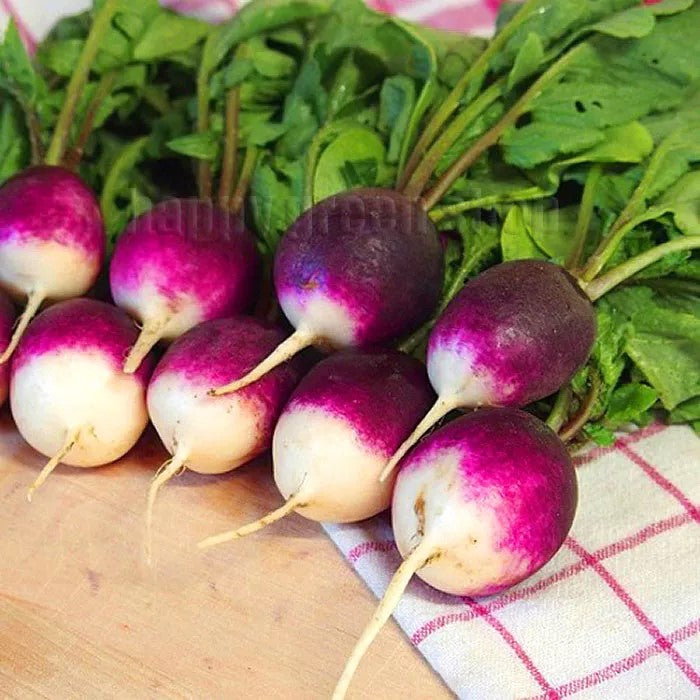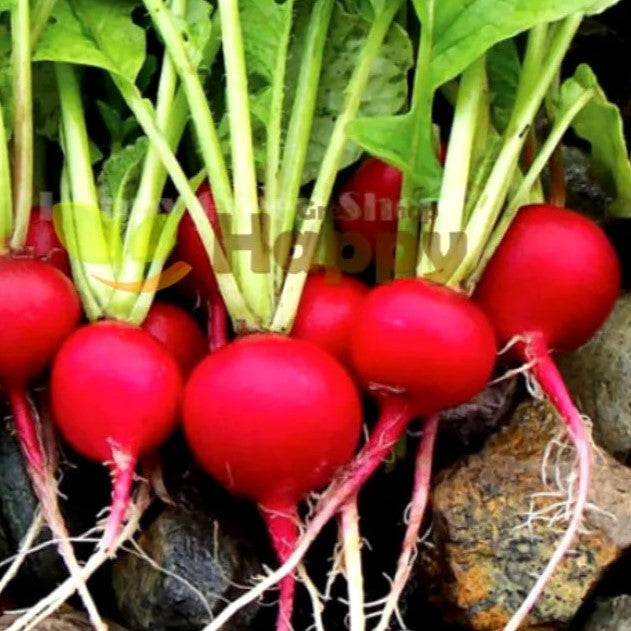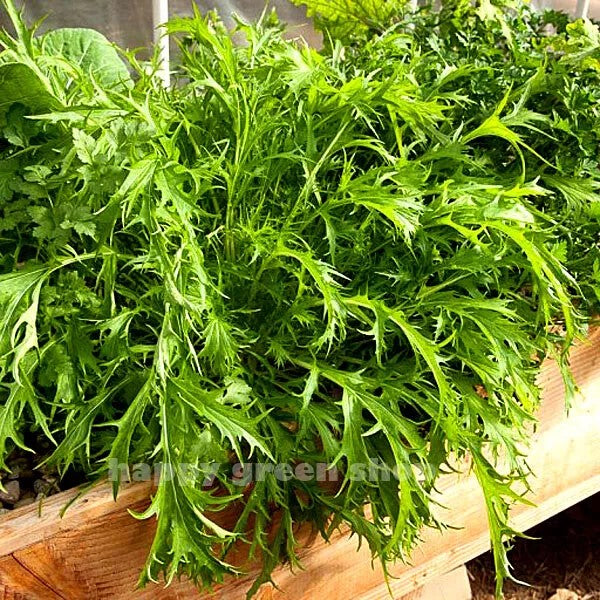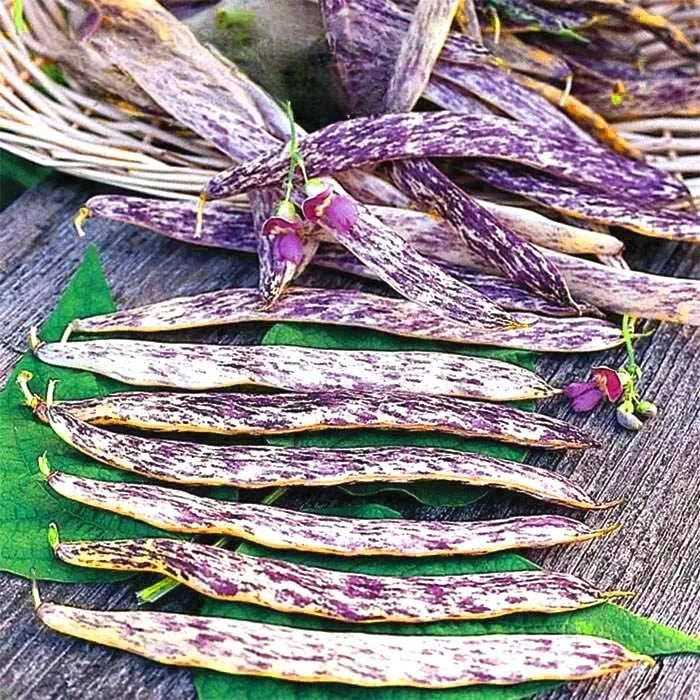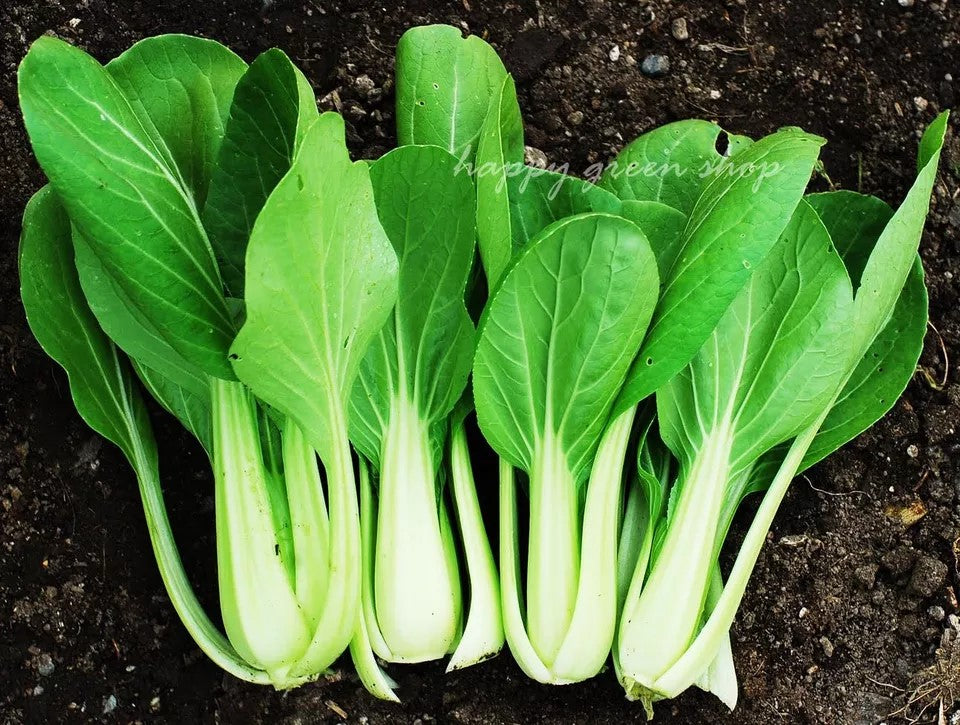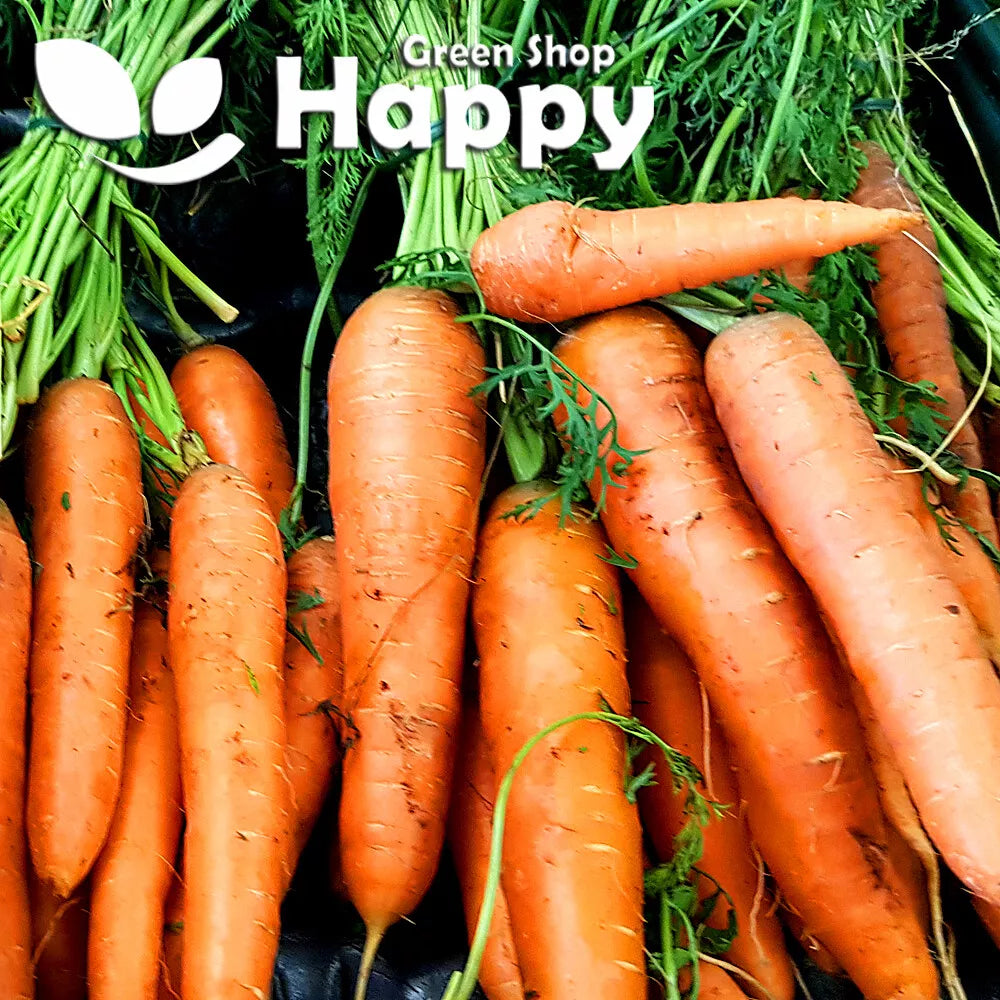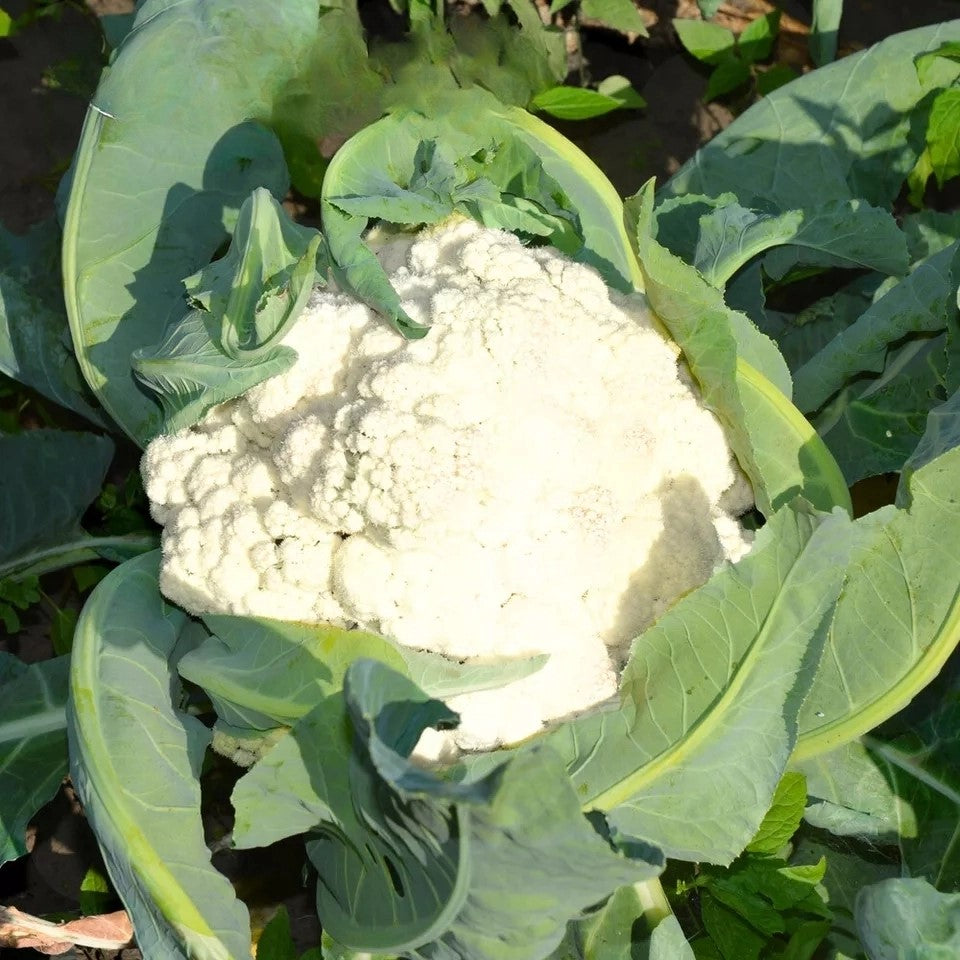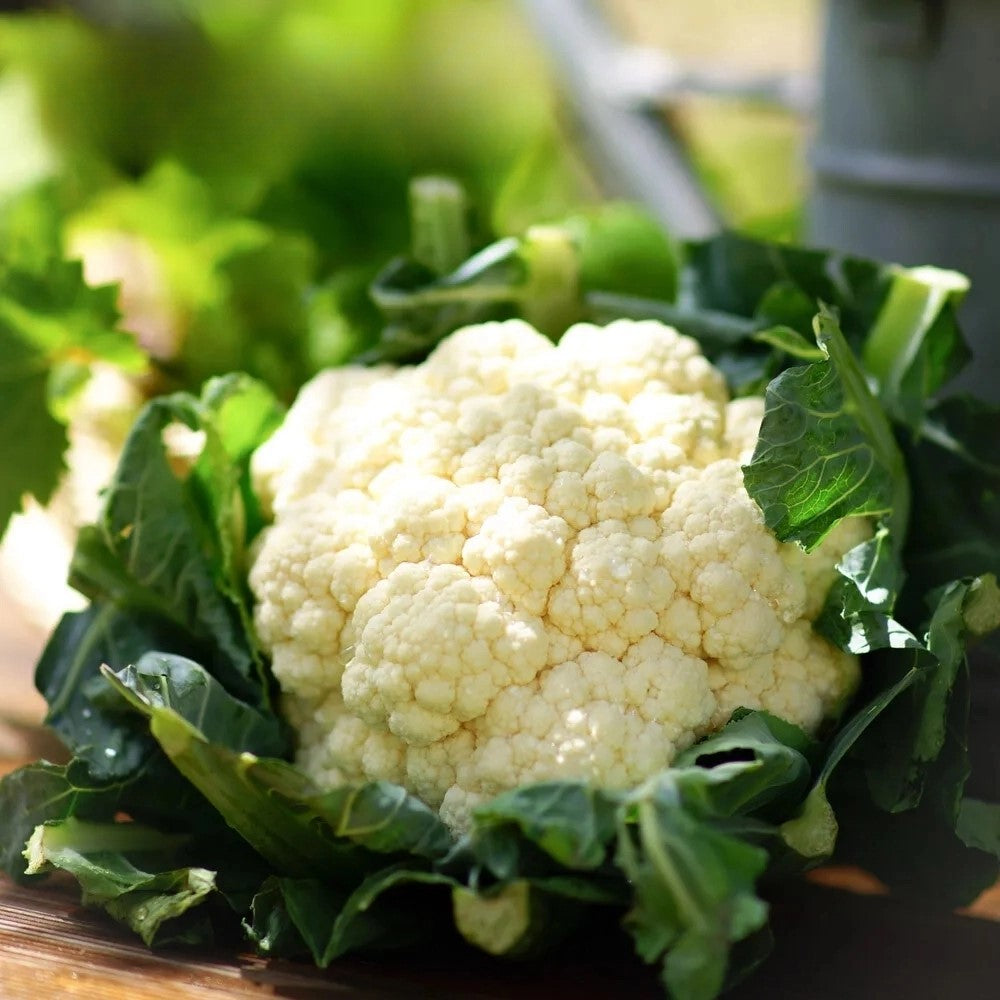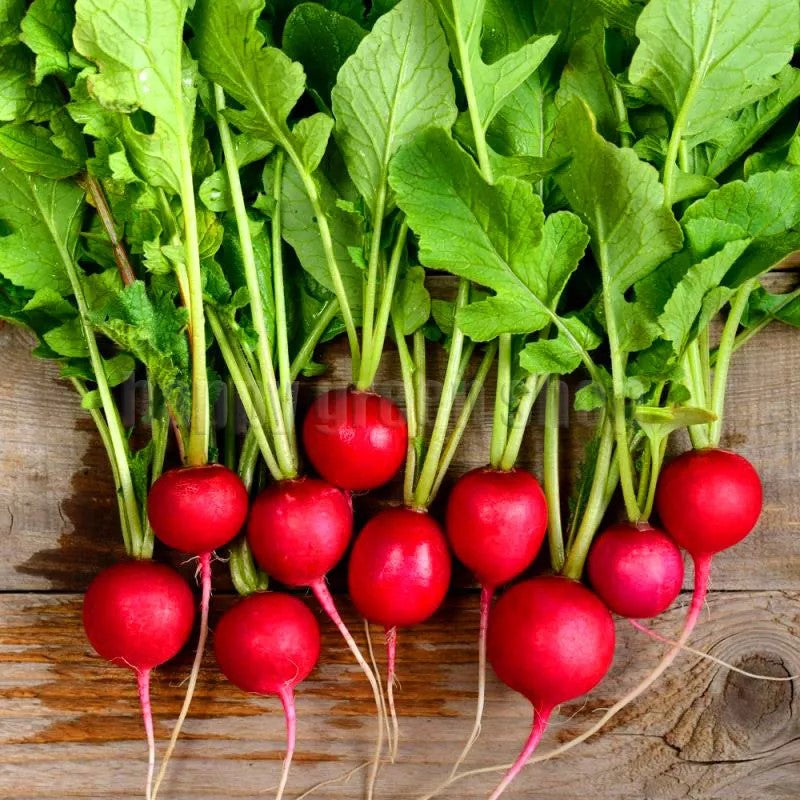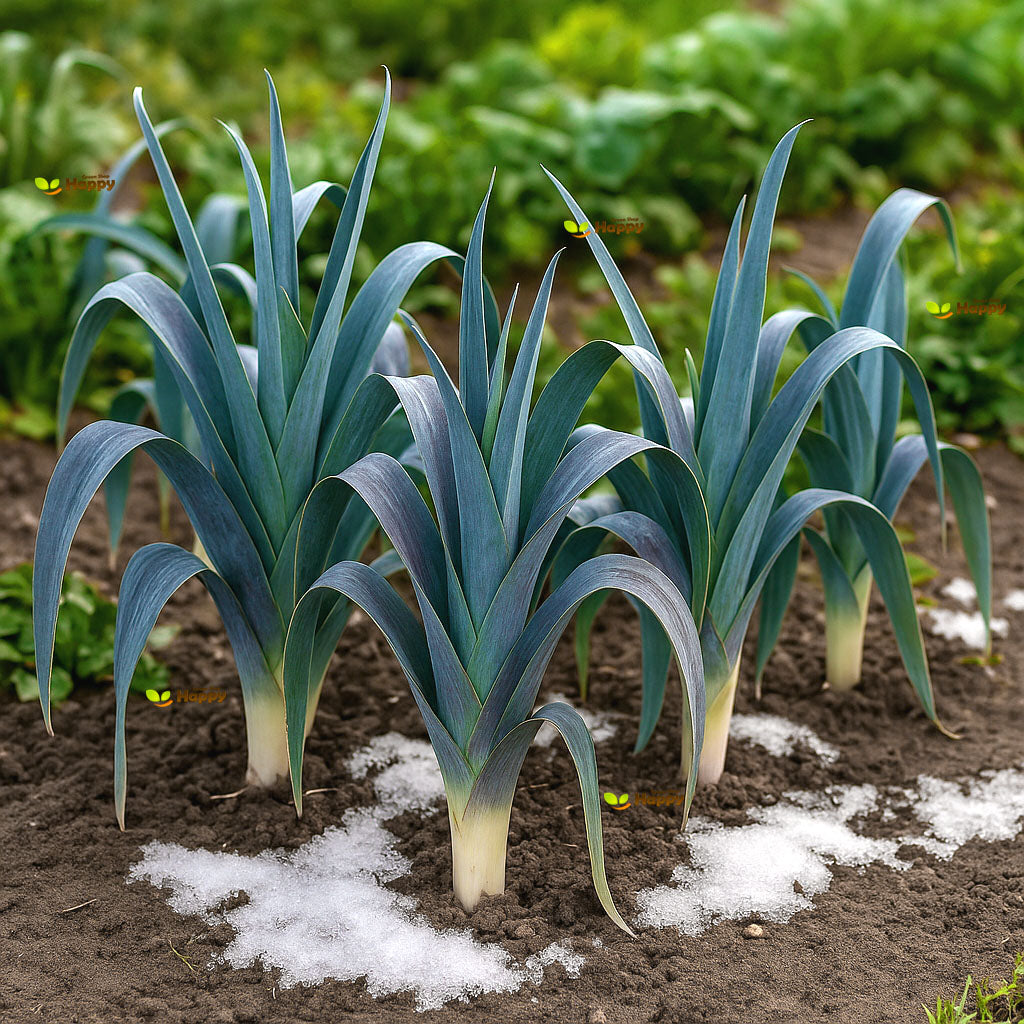Sort by:
34 products
34 products
Radish ‘Diana’ – Seeds (Raphanus sativus)
Radish ‘Diana’ is an eye-catching variety with unique purple skin tipped in white, producing round roots with crisp, tender flesh. Mild yet refreshing in flavor, this radish adds a splash of color and crunch to salads and snacks. A quick-maturing variety, it is perfect for sowing little and often to ensure continuous harvests throughout the season.
How to Grow
-
Sow direct outdoors: March – September in well-prepared soil.
-
Sow thinly, 1 cm deep in rows 10 cm apart.
-
Thin seedlings to 2–3 cm for best-sized roots.
-
Keep soil moist to avoid woody or split radishes.
Key Features
-
Striking purple and white bicolor skin
-
Round roots with crisp, mild flesh
-
Fast-growing and reliable crop
-
Excellent for successional sowing
-
Adds color and variety to salads
Ideal For
-
Fresh salads and garnishes
-
Healthy snacking straight from the garden
-
Containers, raised beds, and open ground
Sowing & Harvest
-
Sow: March – September
-
Harvest: April – October (ready in 3–4 weeks)
Quick Tip
Harvest young and tender for the best flavor and to enjoy their unique bicolor appearance at its brightest.
Radish ‘Carmen’ Seeds (Raphanus sativus)
Add crisp, vibrant color to your garden with Radish ‘Carmen’ (Raphanus sativus). This fast-growing variety produces round, bright red roots with a mild, crunchy flavor, perfect for fresh salads, garnishes, and quick harvests. Easy to grow and reliable, it’s ideal for both kitchen gardens and raised beds.
How to Grow
-
Sow seeds directly outdoors from early spring to late summer.
-
Use well-drained, fertile soil in full sun.
-
Sow seeds 1–2 cm deep and thin seedlings to 5–8 cm apart.
-
Keep soil consistently moist for best germination and growth (5–10 days).
-
Harvest roots when fully formed but tender for best flavor.
Key Features
-
Round, bright red roots with mild, crunchy flavor
-
Fast-growing and easy to cultivate
-
Ideal for fresh salads, garnishes, and snacking
-
Reliable and productive in temperate climates
-
Suitable for successive sowing for continuous harvest
Ideal For
-
Kitchen gardens and raised beds
-
Fresh salads, garnishes, and cooking
-
Succession sowing for continuous harvest
-
Adding vibrant color to vegetable beds
Sowing
-
Best time: Early spring to late summer outdoors
-
Depth: 1–2 cm
-
Spacing: Thin to 5–8 cm apart
-
Prefers full sun and fertile, well-drained soil
Quick Tip
-
Sow every 2–3 weeks for a steady supply of tender, colorful radishes throughout the season.
Mizuna – Seeds (Brassica rapa var. japonica)
A staple of Japanese cuisine, Mizuna is a fast-growing leafy green with elegant, feathery leaves and a mild, peppery flavor. Often used in salads, stir-fries, and soups, it’s highly versatile and easy to grow. Mizuna is also very cold-tolerant, making it an excellent choice for year-round harvests, especially in spring and autumn.
How to Grow
-
Sow outdoors from March to September or under cover in winter for year-round harvest.
-
Sow thinly, 0.5 cm deep, in rows 15–20 cm apart.
-
Prefers moist, fertile, well-drained soil in sun or partial shade.
-
Harvest leaves young for salads or allow plants to mature for cooking.
Key Features
-
Japanese mustard green with feathery leaves
-
Mild, peppery taste – great for salads, stir-fries & soups
-
Fast-growing and highly productive
-
Cold-hardy and suitable for year-round cultivation
-
Cut-and-come-again variety for continuous harvest
Ideal For
-
Asian-inspired cooking
-
Salads, soups, and stir-fries
-
Kitchen gardens, raised beds, or containers
-
Succession sowing for steady supply
Sowing & Harvest
-
Sow: March to September (under cover in winter)
-
Depth: 0.5 cm
-
Spacing: 15–20 cm
-
Harvest: 3–6 weeks after sowing
Quick Tip
-
Regular harvesting of young leaves will extend the cropping period and prevent the plants from bolting.
Herb Corn Salad Seeds (Valerianella locusta)
Also known as Lamb’s Lettuce or Mâche, Corn Salad is a fast-growing leafy green with soft, nutty-flavored leaves. Popular in European cuisine, it’s perfect for salads, sandwiches, and as a tender garnish. Hardy and cold-tolerant, it thrives in cooler months, making it an excellent choice for autumn and winter harvests. Easy to grow and highly nutritious, it’s a must-have for year-round salads.
How to Grow
-
Sow directly outdoors from March to May, and again from August to October.
-
Prefers fertile, well-drained soil in full sun or partial shade.
-
Sow thinly, 1 cm deep, in rows 20 cm apart.
-
Thin seedlings to 10 cm spacing for healthy plants.
-
Harvest young leaves as needed for cut-and-come-again cropping.
Key Features
-
Tender, nutty-flavored leaves
-
Hardy and cold-tolerant, ideal for winter salads
-
Quick and easy to grow
-
Perfect for cut-and-come-again harvesting
-
Highly nutritious and versatile in the kitchen
Ideal For
-
Autumn and winter vegetable gardens
-
Fresh salads and sandwich fillings
-
Containers, raised beds, and small gardens
-
Gardeners seeking a reliable cool-season green
Sowing
-
Best time: March–May, August–October
-
Depth: 1 cm
-
Spacing: 10 cm between plants, 20 cm between rows
-
Position: Full sun or partial shade
-
Harvest: October to March
Quick Tip
-
Succession sow every few weeks for a continuous supply of fresh leaves throughout the cooler seasons.
Dwarf Bean 'Merveille de Piemonte' – Seeds
(Phaseolus vulgaris) – Classic French Bush Bean
The 'Merveille de Piemonte' dwarf bean is a traditional French variety valued for its tender, stringless pods with a delicate flavor. Compact and easy to grow, this bush-type bean does not require staking and produces generously over a long harvest period. Perfect for home gardens, allotments, or pots.
Key Features
-
Type: Dwarf bush bean (annual legume)
-
Height: 40–50 cm
-
Pods: Straight, green, stringless, 12–15 cm long
-
Harvest: 55–65 days from sowing
-
Special: High-yielding, tender and flavorful
Ideal For
-
Fresh harvesting and steaming
-
Freezing or preserving
-
Compact gardens and raised beds
-
Classic French kitchen gardens
Sowing & Growing
-
Sow outdoors: May–July, when soil is warm (min. 15°C)
-
Spacing: 40 cm between rows, 5–7 cm between seeds
-
Soil: Fertile, well-drained, moderately moist
-
Sunlight: Full sun
-
Watering: Regular, especially during flowering and pod formation
Care Tips
-
Avoid sowing in cold, wet soil – beans thrive in warmth.
-
Succession sow every 2 weeks for extended harvest.
-
Mulching helps conserve soil moisture.
Coriander Seeds (Coriandrum sativum)
Grow fresh, aromatic herbs with Coriander (Coriandrum sativum). This versatile herb produces feathery green leaves and aromatic seeds, perfect for salads, cooking, and spice blends. Fast-growing and easy to cultivate, it’s ideal for herb gardens, kitchen beds, and containers.
How to Grow
-
Sow seeds directly outdoors from early spring to late summer.
-
Use fertile, well-drained soil in full sun to partial shade.
-
Sow seeds 0.5–1 cm deep and thin seedlings to 15–20 cm apart.
-
Keep soil consistently moist for best germination (7–14 days).
-
Harvest leaves when young and tender; collect seeds when fully mature.
Key Features
-
Feathery, aromatic green leaves and flavorful seeds
-
Fast-growing and easy to cultivate
-
Ideal for fresh salads, cooking, and spice blends
-
Suitable for outdoor and container growing
-
Hardy and versatile culinary herb
Ideal For
-
Herb gardens, kitchen beds, and containers
-
Fresh salads, cooking, and seasoning
-
Homegrown spice production
-
Companion planting to attract beneficial insects
Sowing
-
Best time: Early spring to late summer outdoors
-
Depth: 0.5–1 cm
-
Spacing: Thin to 15–20 cm apart
-
Prefers full sun to partial shade and fertile, well-drained soil
Quick Tip
-
Sow in succession every 2–3 weeks for a continuous supply of fresh leaves and seeds.
Chinese Cabbage ‘Pak Choi’ Seeds (Brassica oleracea)
Add fresh crunch to your kitchen garden with Chinese Cabbage ‘Pak Choi’ (Brassica oleracea). This fast-growing Asian green produces crisp white stems and tender, glossy green leaves with a mild, sweet flavor. Delicious in stir-fries, soups, and salads, Pak Choi is versatile, nutritious, and easy to grow in beds, borders, or containers.
How to Grow
-
Sow seeds indoors from early spring or directly outdoors from spring to late summer.
-
Use fertile, moist, well-drained soil in full sun or partial shade.
-
Sow seeds 1 cm deep and thin seedlings to 20–25 cm apart.
-
Keep soil consistently moist to prevent bolting.
-
Harvest young leaves as cut-and-come-again or allow plants to mature for full heads.
Key Features
-
Crisp white stems with tender, green leaves
-
Mild, sweet flavor with high nutritional value
-
Fast-growing and productive crop
-
Excellent for stir-fries, soups, and fresh salads
-
Thrives in gardens, raised beds, and containers
Ideal For
-
Stir-fries, soups, and salads
-
Cut-and-come-again harvesting or full heads
-
Home gardens, allotments, and container growing
-
Quick, healthy crops for continuous harvest
Sowing
-
Best time: Spring to late summer
-
Depth: 1 cm
-
Spacing: 20–25 cm apart
-
Prefers full sun or partial shade, fertile and moist soil
Quick Tip
-
Sow in succession every few weeks for a steady supply of fresh, crunchy Pak Choi.
Chantenay Carrot ‘Charisma’ F1 Seeds (Daucus carota)
Grow high-yield, flavorful carrots with Chantenay Carrot ‘Charisma’ F1 (Daucus carota). This uniform, early-maturing variety produces thick, short, orange roots with excellent taste, ideal for fresh salads, cooking, and roasting. Hardy and easy to grow, it’s perfect for kitchen gardens, raised beds, and succession sowing.
How to Grow
-
Sow seeds directly outdoors from early spring to midsummer.
-
Use fertile, well-drained soil in full sun.
-
Sow seeds 1 cm deep and thin seedlings to 5–8 cm apart.
-
Keep soil consistently moist for optimal germination (10–14 days).
-
Harvest roots when fully grown but still tender for best flavor.
Key Features
-
Thick, short, uniform orange roots
-
Early-maturing, high-yield F1 hybrid
-
Sweet and flavorful, perfect for salads, cooking, or roasting
-
Reliable and easy to grow
-
Suitable for succession sowing and continuous harvest
Ideal For
-
Vegetable gardens, raised beds, and allotments
-
Fresh salads, cooking, and roasting
-
Succession sowing for steady harvests
-
Homegrown culinary use
Sowing
-
Best time: Early spring to midsummer outdoors
-
Depth: 1 cm
-
Spacing: Thin to 5–8 cm apart
-
Prefers full sun and fertile, well-drained soil
Quick Tip
-
Sow in successive batches every 2–3 weeks to enjoy a continuous supply of tender, sweet roots.
Cauliflower 'Snowball X' – Seeds
(Brassica oleracea) – Classic White Curds, Reliable & Early
Cauliflower 'Snowball X' is a high-yielding, early-maturing variety known for its compact, snow-white curds and uniform growth. Its tender, mild-flavored heads make it perfect for fresh eating, steaming, roasting, and soups. A reliable choice for home gardens and small-scale growers.
Key Features
-
Type: Biennial, grown as annual
-
Heads: Compact, dense, snow-white
-
Flavor: Mild, tender, sweet
-
Harvest: Early to mid-season
-
Use: Fresh cooking, steaming, roasting, soups, freezing
Ideal For
-
Home gardens & allotments
-
Early harvesting for fresh consumption
-
Succession planting for continuous supply
-
Culinary use and freezing
Sowing & Growing
-
Sow indoors: February–April, transplant seedlings after 4–6 weeks.
-
Sow outdoors: March–May for late summer harvest.
-
Spacing: 45–60 cm between plants, 60–70 cm between rows.
-
Soil: Fertile, well-drained soil enriched with compost.
-
Harvest: When heads are compact and fully formed, before they start to separate.
Care Tips
-
Keep soil evenly moist to prevent splitting.
-
Protect young plants from pests with netting if necessa
Showing 27/34

